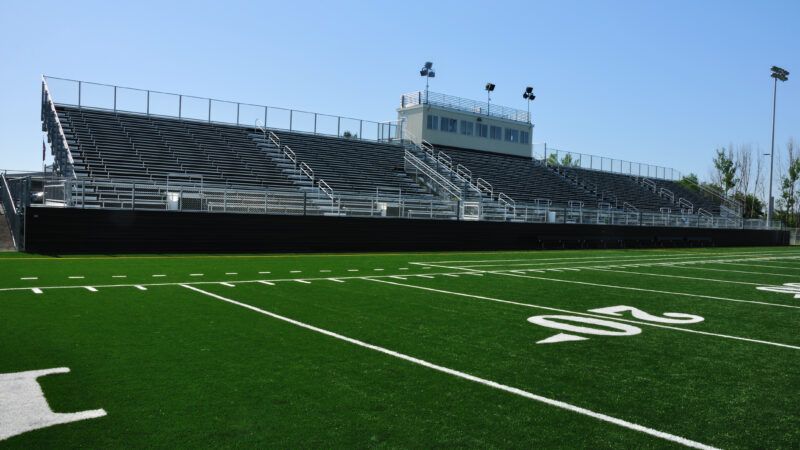Kids at Oklahoma Football Games Must Sit With Their Parents
Students in four Oklahoma school districts are also required to wear their school ID on a lanyard and sit on their own team's side.

Football season is almost over, but for the past several weeks, middle school students who attended high school games in several Oklahoma cities have had to sit with their parents at all times. At some schools, even if they go to the bathroom, they must be accompanied by an adult.
The Oklahoma schools' rules were implemented after a 16-year-old student was shot to death on August 25 at the first home game of the season for the Choctaw High School Yellowjackets.
Toward the end of the third quarter, shots rang out on the visitors' side. The victim, who was not a student at either team's school, was allegedly killed following an argument he had had with another teen. In other words, this was not what we think of as a school shooting, except that it was on school property.
In the ensuing panic, fans ran for safety and an off-duty officer shot a 42-year-old in the chest. A 15-year-old girl was also shot.
There were seven on-duty police officers at the game for security purposes, NBC reports.
The new safety rules that went into effect in at least four Oklahoma school districts include requiring all students at high school football games to wear their school ID on a lanyard. Attendees must also sit on their own team's side.
The rules at the Moore Public Schools—part of the Oklahoma City metro area—state that: "Junior High and elementary students must have a parent/guardian present for the duration of the event, and they must remain with the parent/ guardian, including [during] restroom and concession breaks."
Most purses and backpacks are forbidden, but attendees may carry a one-gallon Ziploc bag, a clear tote about the size of a sheet of paper, or a clutch no bigger than a paperback. Diaper bags are allowed, for what I assume are the obvious reasons.
Students attending Mustang Public Schools cannot mill about. "Loitering will not be tolerated," according to the rules. "Students/children are to sit in the stands and shall not congregate under the stands or in other areas of the sporting complex."
Erin Henriques—my colleague at Let Grow, the nonprofit I co-founded—tells me that these kinds of restrictions have become commonplace.
"Since I don't have kids in school anymore, I'm not sure how others feel about it," writes Henriques, who lives in Mustang, Oklahoma. "But my understanding is that everyone has gotten so used to privileges being taken away because of violence that it is just something they now have to abide by for safety, whether it is practical."
In her town, Henriques said, middle school students invited to homecoming come to the high school football games proudly wearing a corsage (on him) and a knee-length sash of matching flowers (on her). It is thrilling for them to walk through the stands together, showing off their "homecoming mums."
Now they must be accompanied by their mom or dad.
In the aftermath of a high school shooting, it's not surprising that some security changes would immediately be put in place—whether or not they do any good. But similar rules were recently adopted at Sheldon High School in Springfield, Oregon, where I can find no report of any recent incidents.
The rules there state that elementary and middle school students must be supervised by a parent or a "responsible adult" at Friday night football games.
The local ABC affiliate reports that Sheldon High School's athletic director said "the changes are to provide a safer and more predictable environment for everyone in attendance by ensuring younger fans have the guidance and support to enjoy games responsibly."
Do kids really need "guidance" at a football game? Are they not able to figure out anything by themselves?
"If I'm a 14-year-old and I have to have a parent go with me to the bathroom at a game? Talk about taking away a child's independence and instilling fear," Henriques said.
Show Comments (26)